Cultural Safety Learning: Aboriginal and Torres Strait Islander People
VerifiedAdded on 2023/06/03
|21
|1572
|228
Presentation
AI Summary
This presentation delves into the lessons learned about improving cultural safety for Aboriginal and Torres Strait Islander people. It begins with a personal reflection on the presenter's identity, background, and interactions with Aboriginal communities, highlighting the influence of historical policies and the importance of cultural understanding. The presentation discusses the implementation of cultural safety perspectives in various sectors, emphasizing principles such as social and restorative justice, Aboriginal self-determination, and negotiated partnerships. It also addresses the historical impacts of European settlement, including land dispossession, disease, and forced displacement, as well as the significance of milestones like the Commonwealth Electoral Act of 1962. Furthermore, the presentation explores challenges in healthcare, such as miscommunication and the need for trained interpreters and cross-cultural training. It concludes by outlining culturally safe health service requirements and the importance of incorporating indigenous groups in the healthcare system to bridge cultural gaps. Desklib provides a platform to access this presentation and many other resources.
1 out of 21
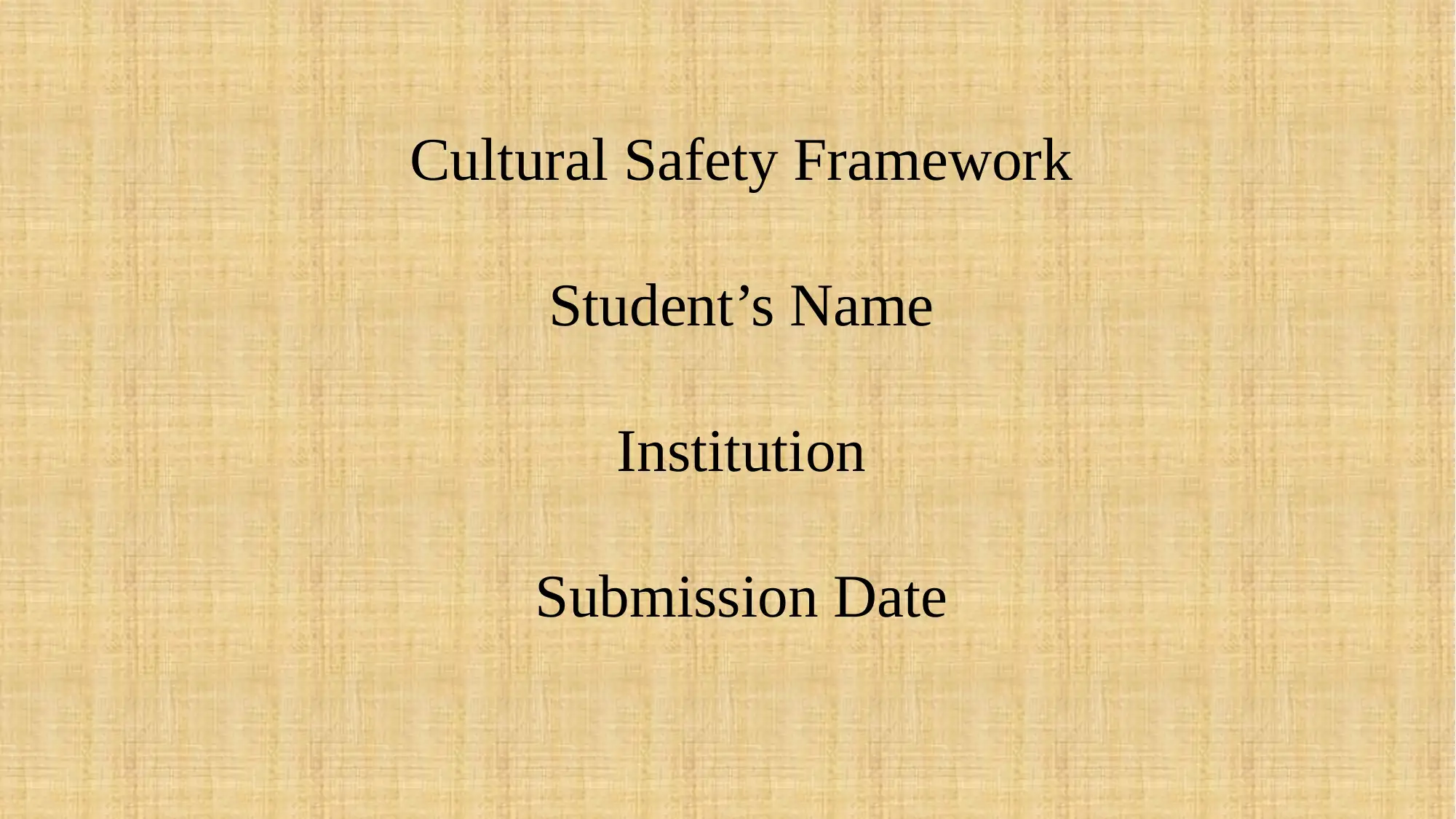
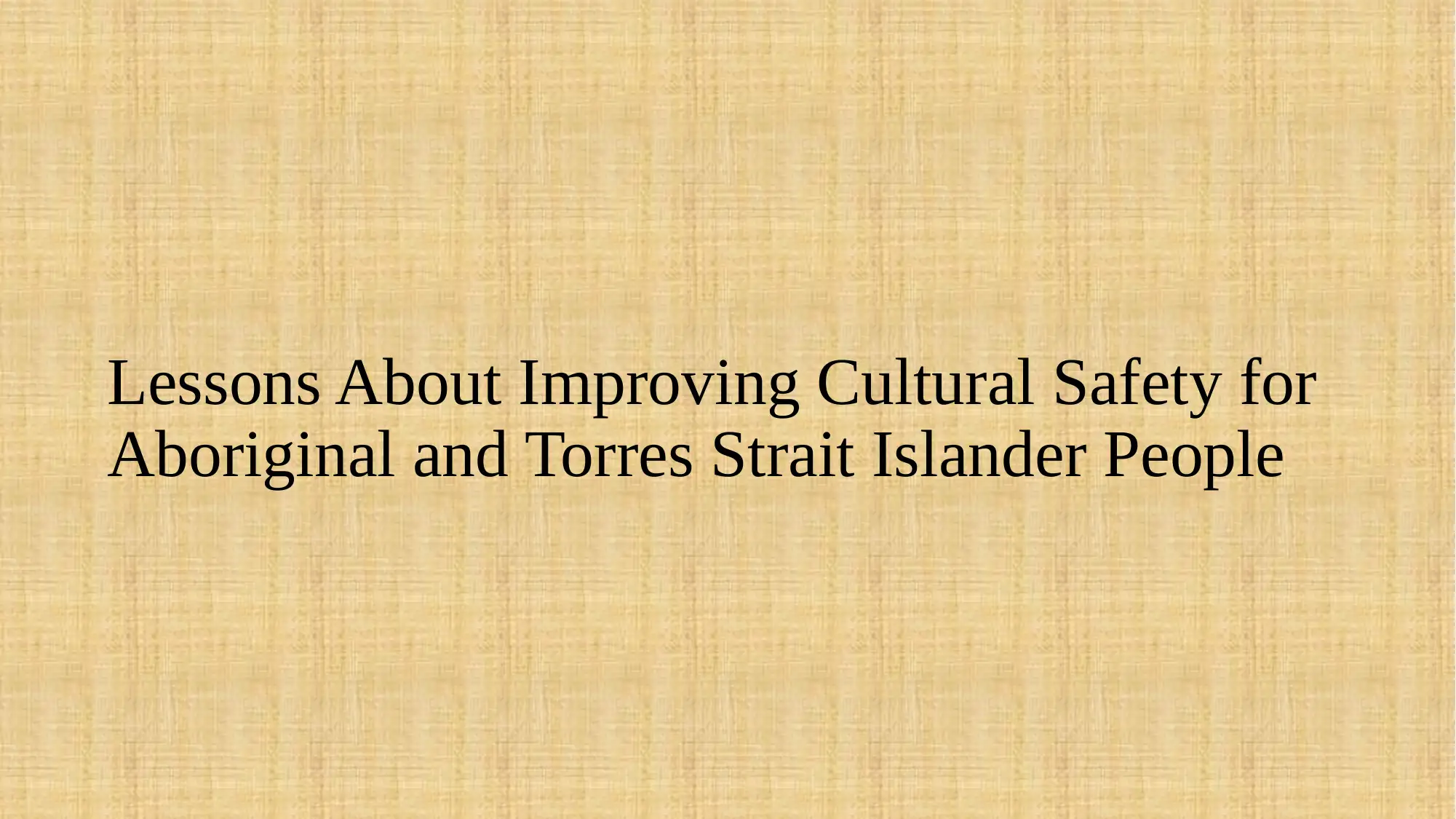
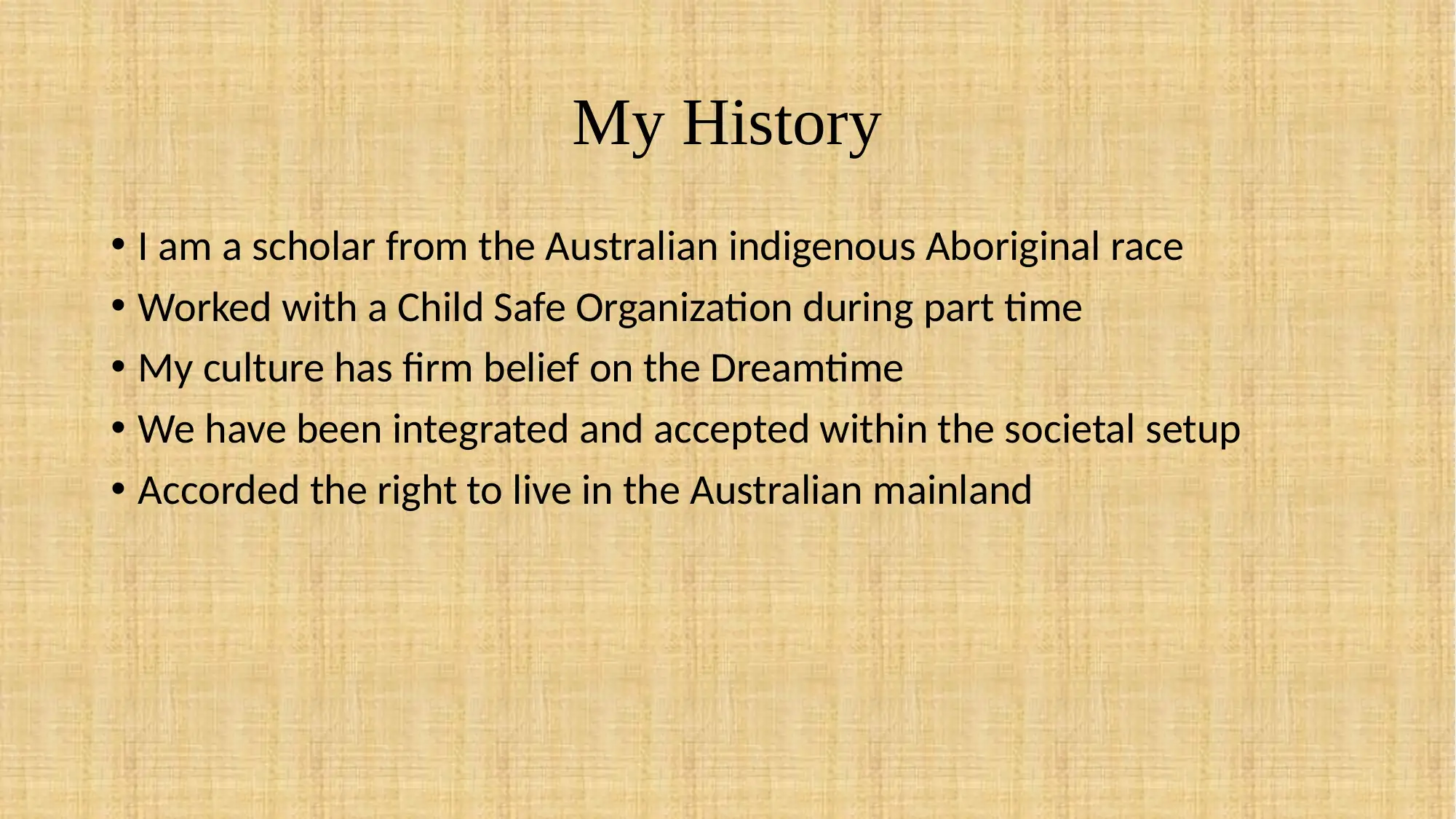

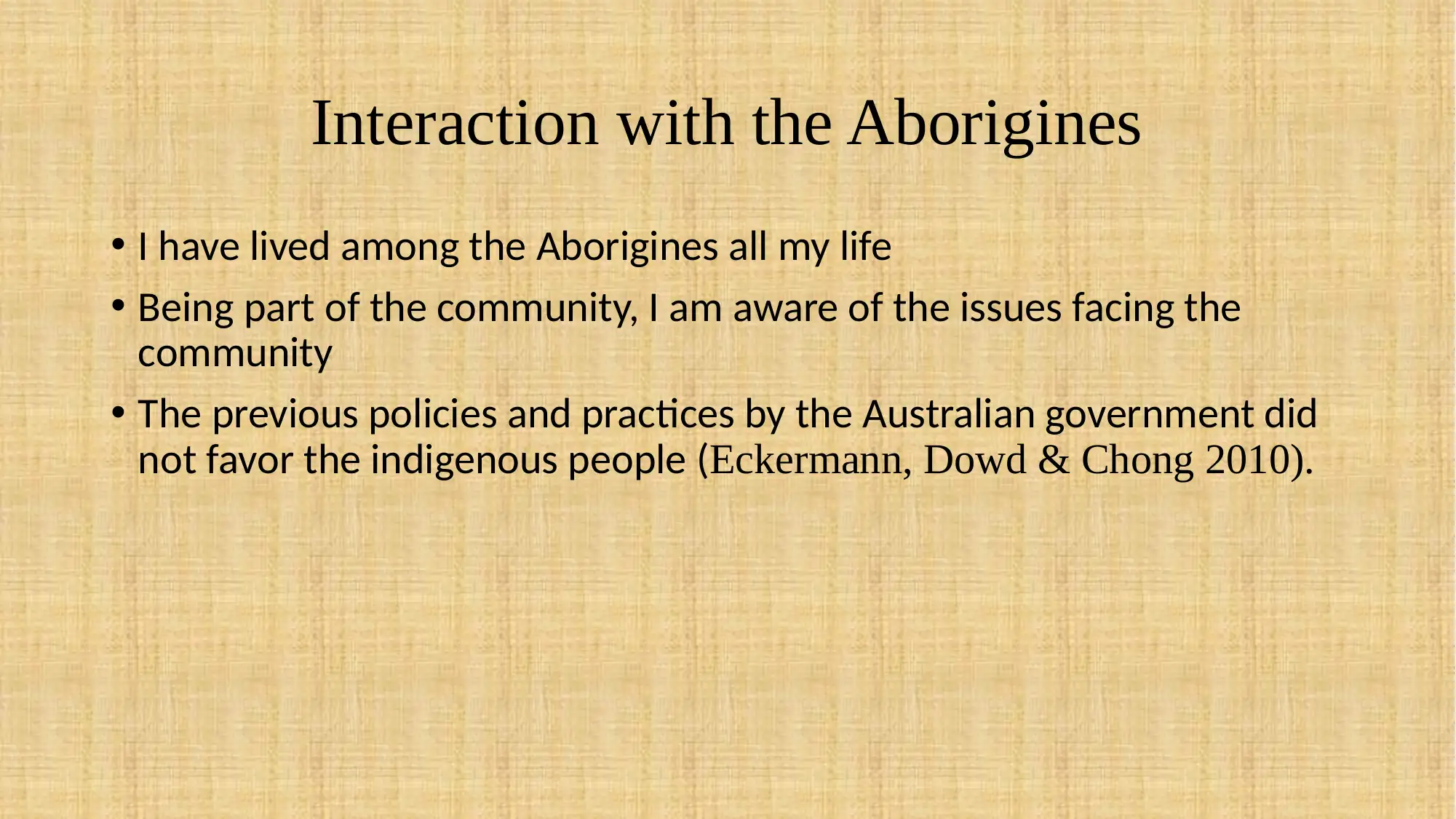
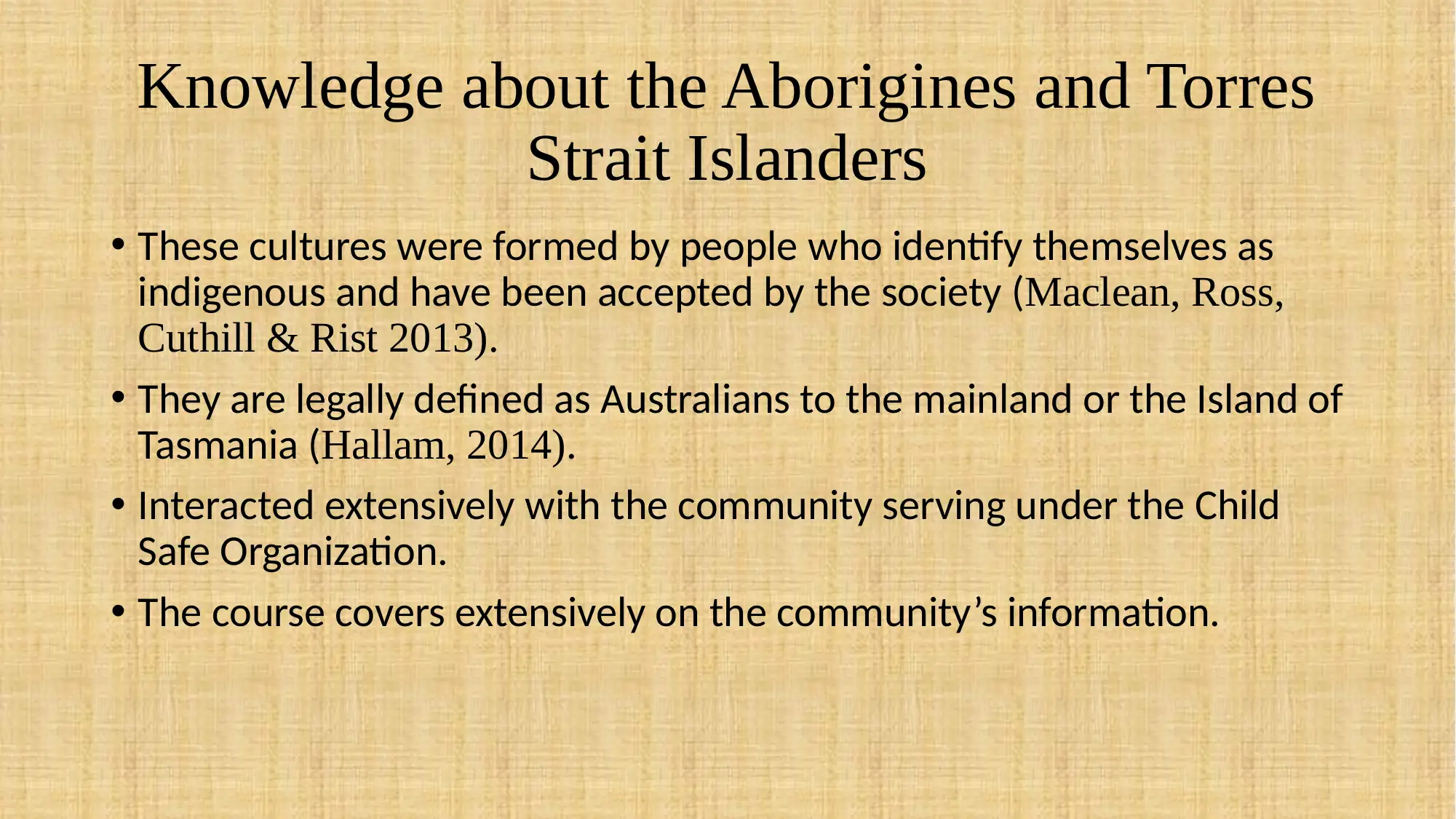
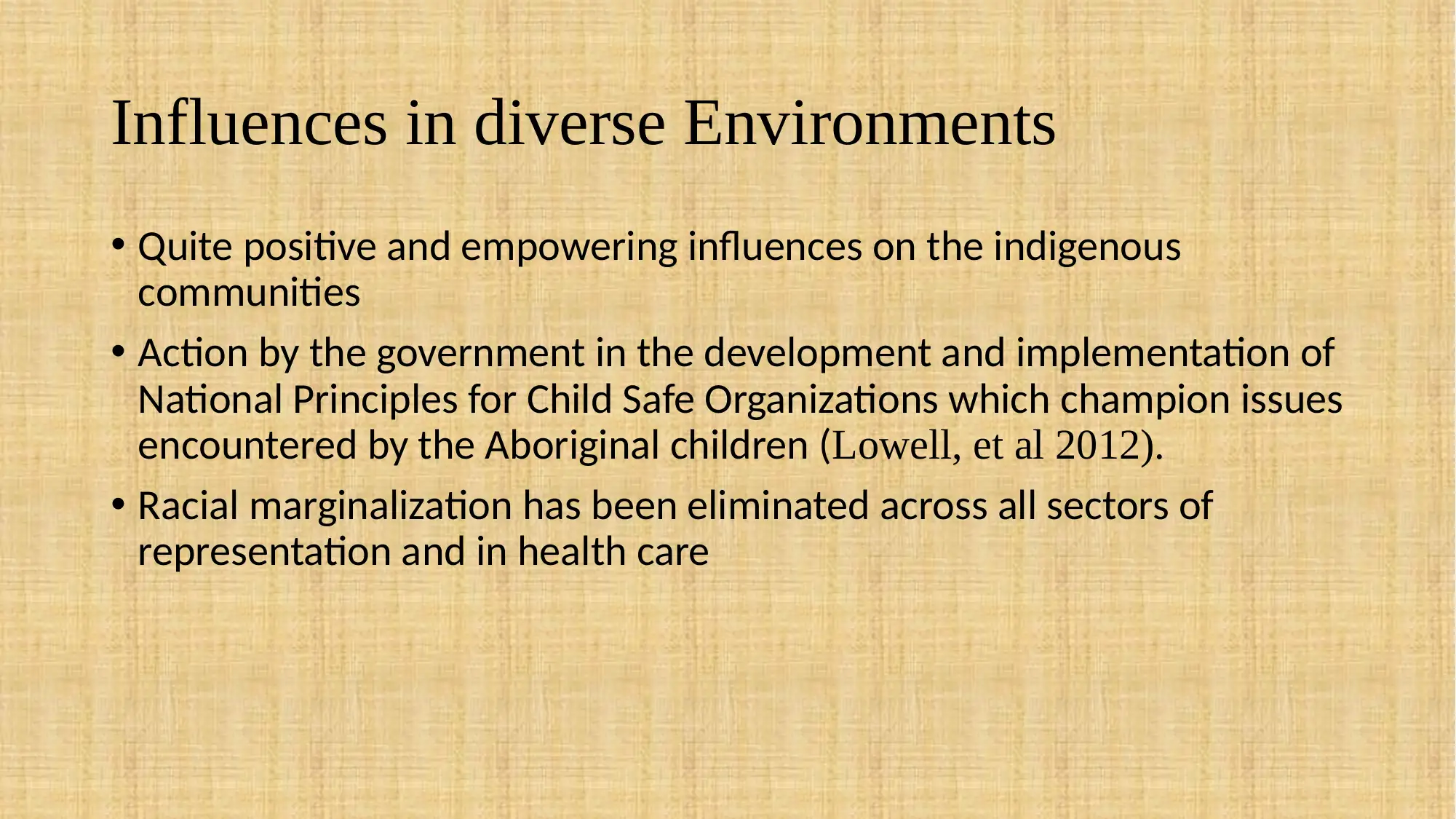
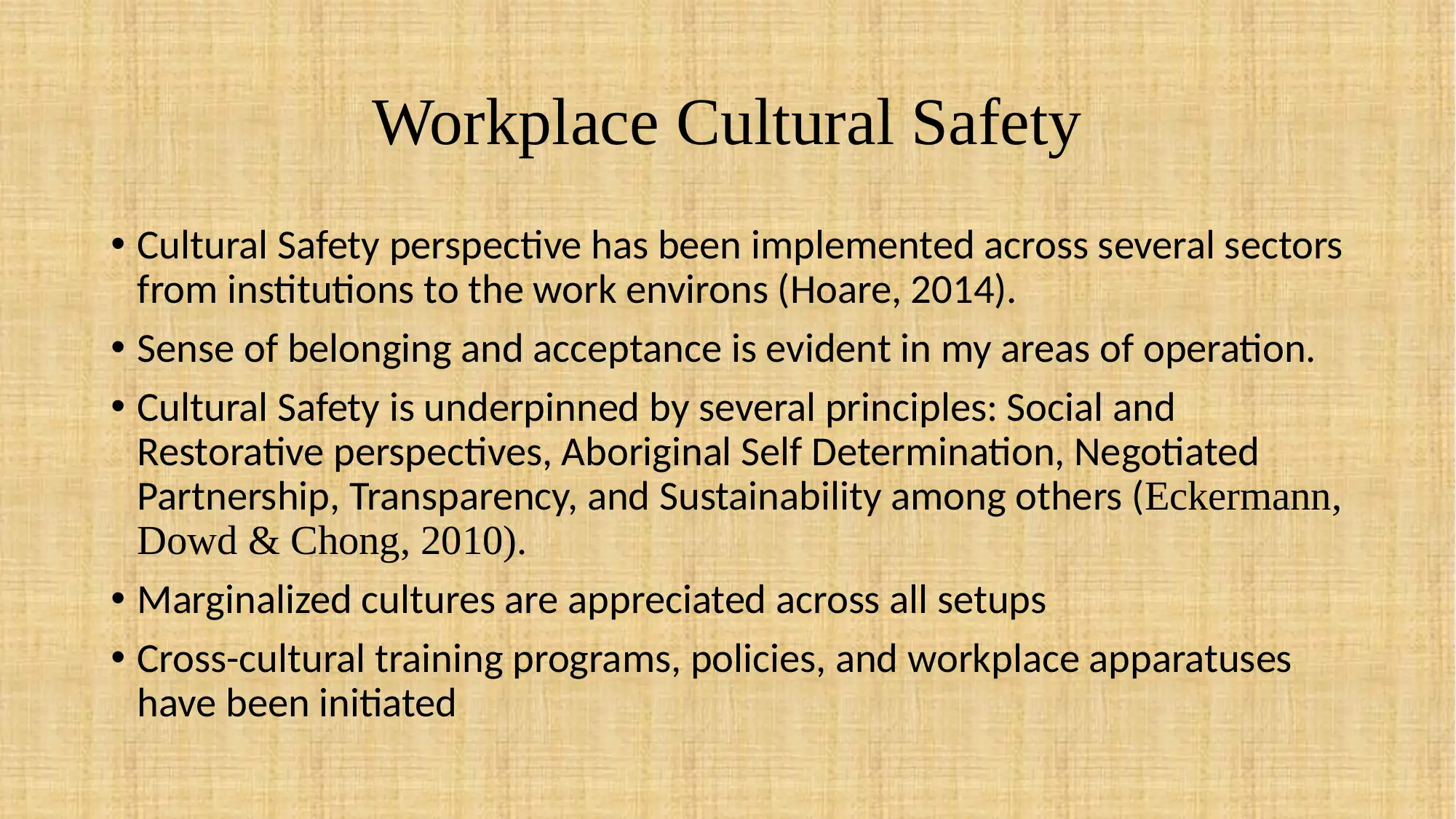
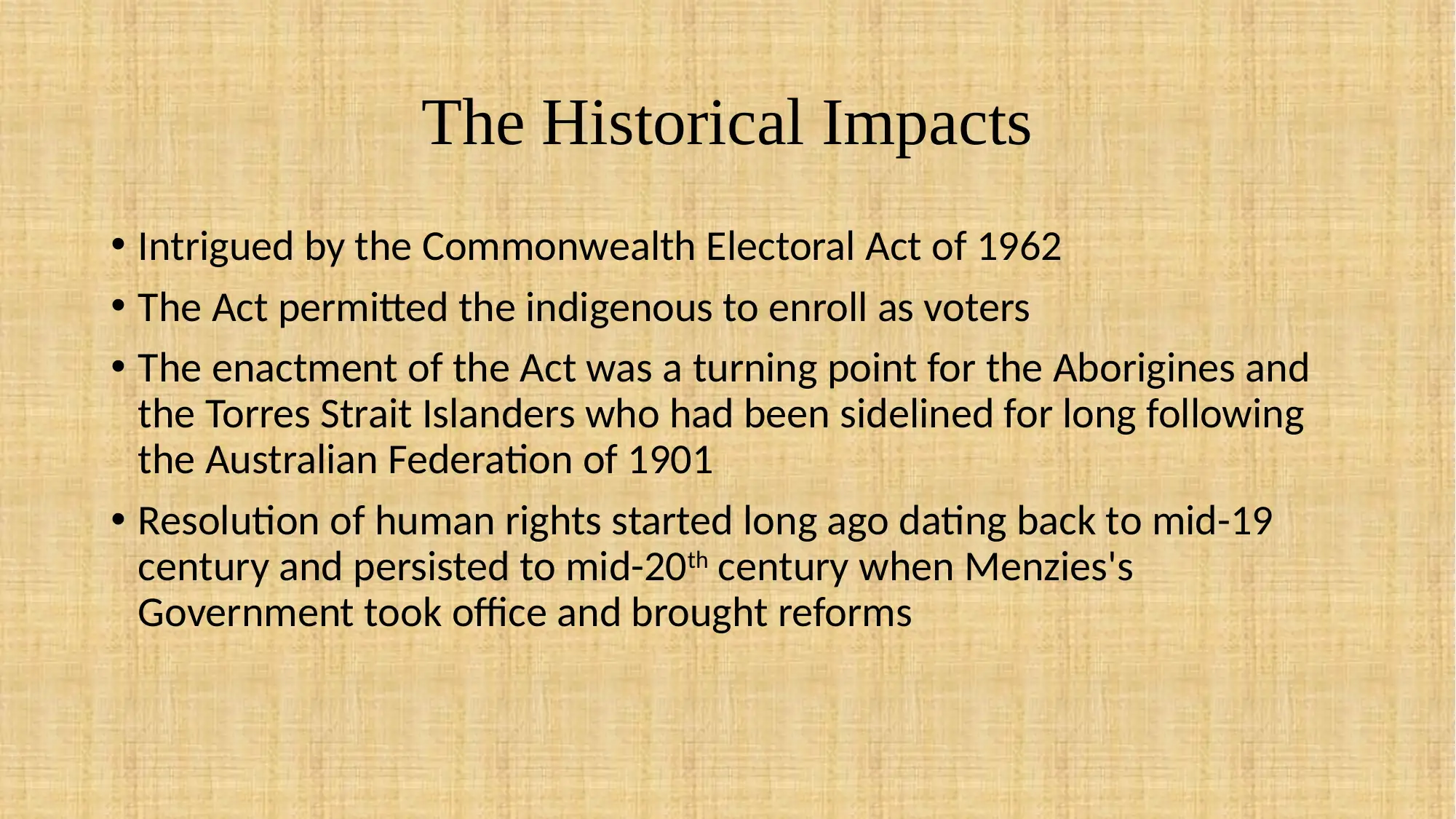
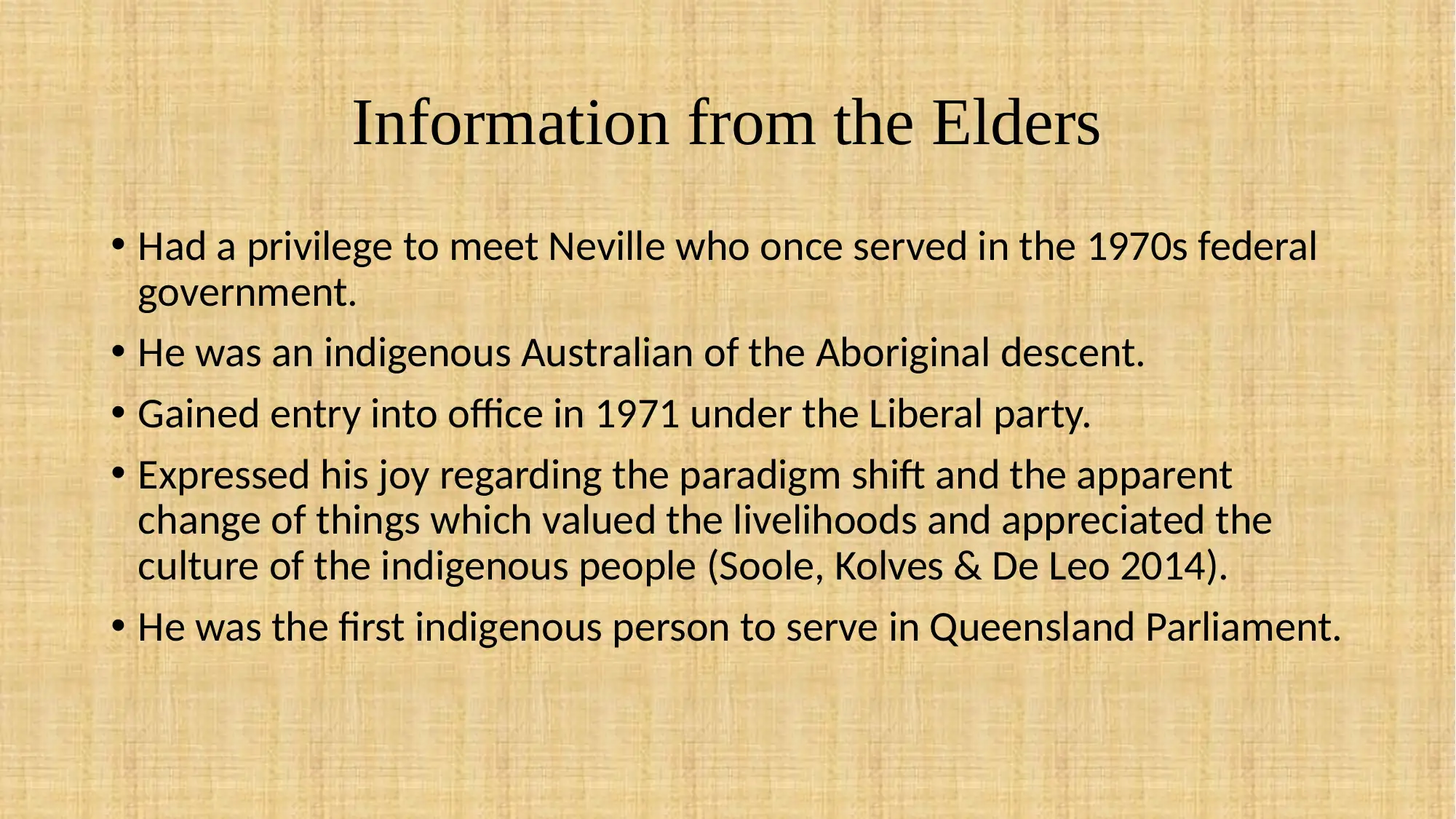
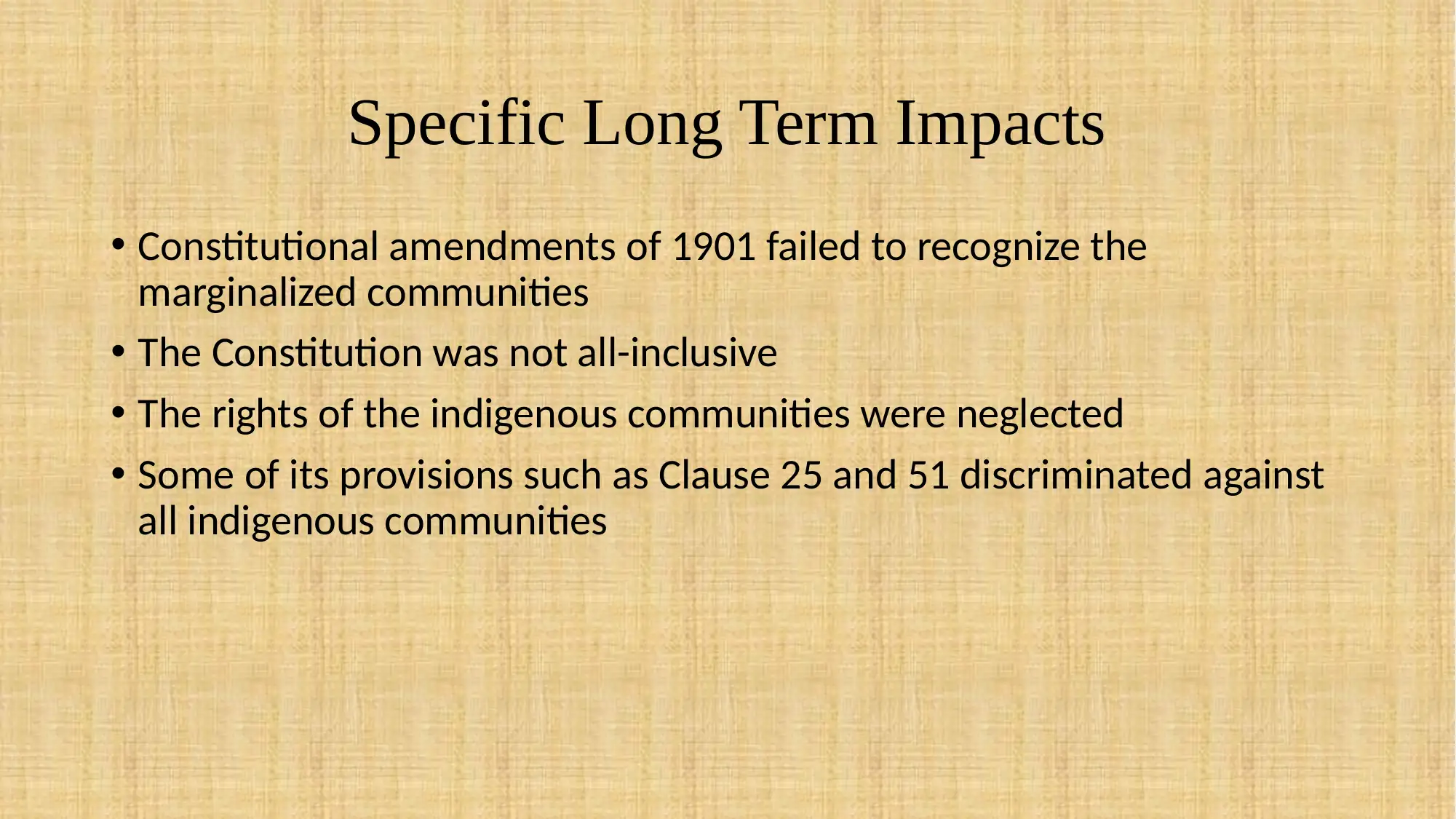
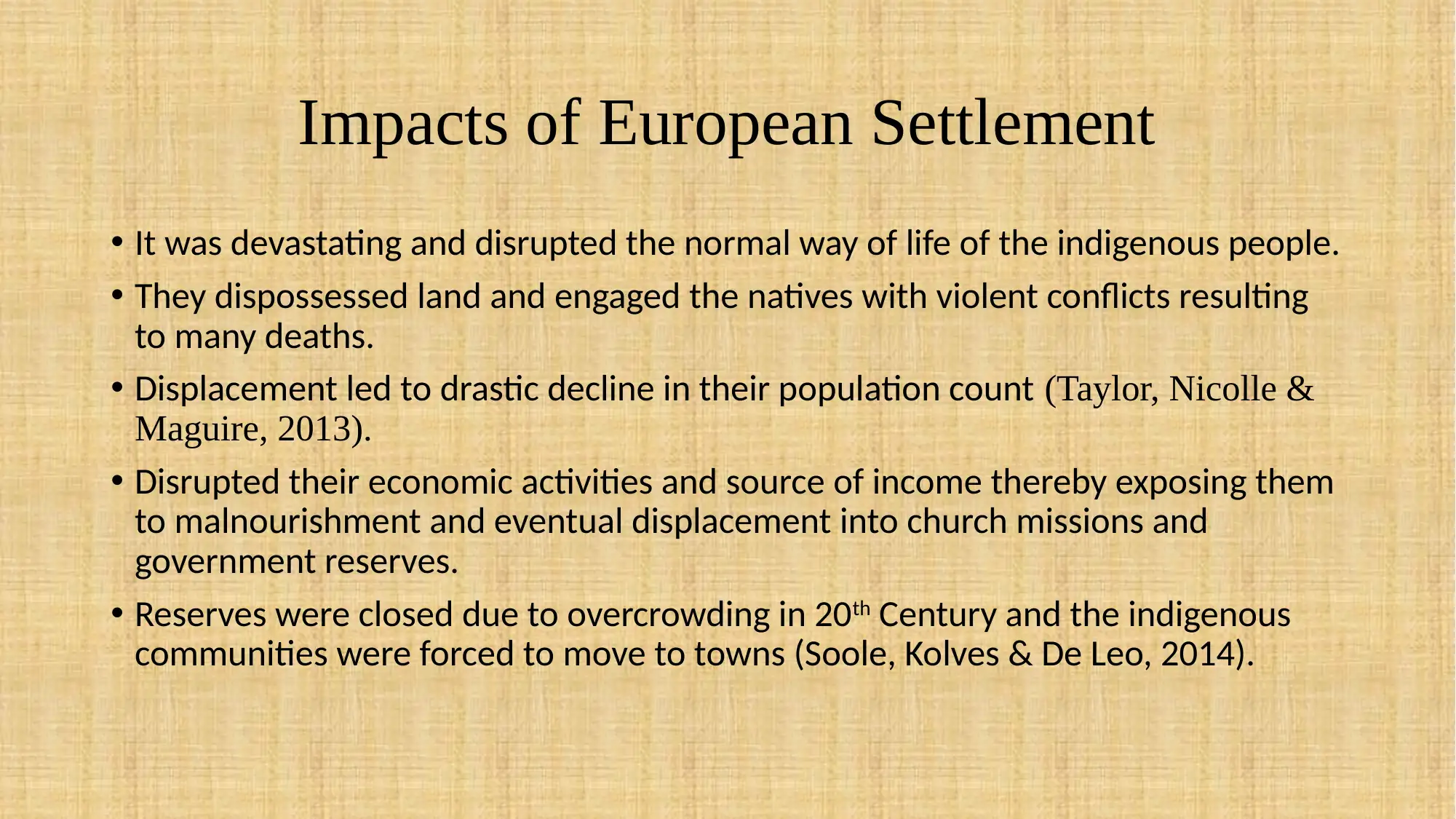
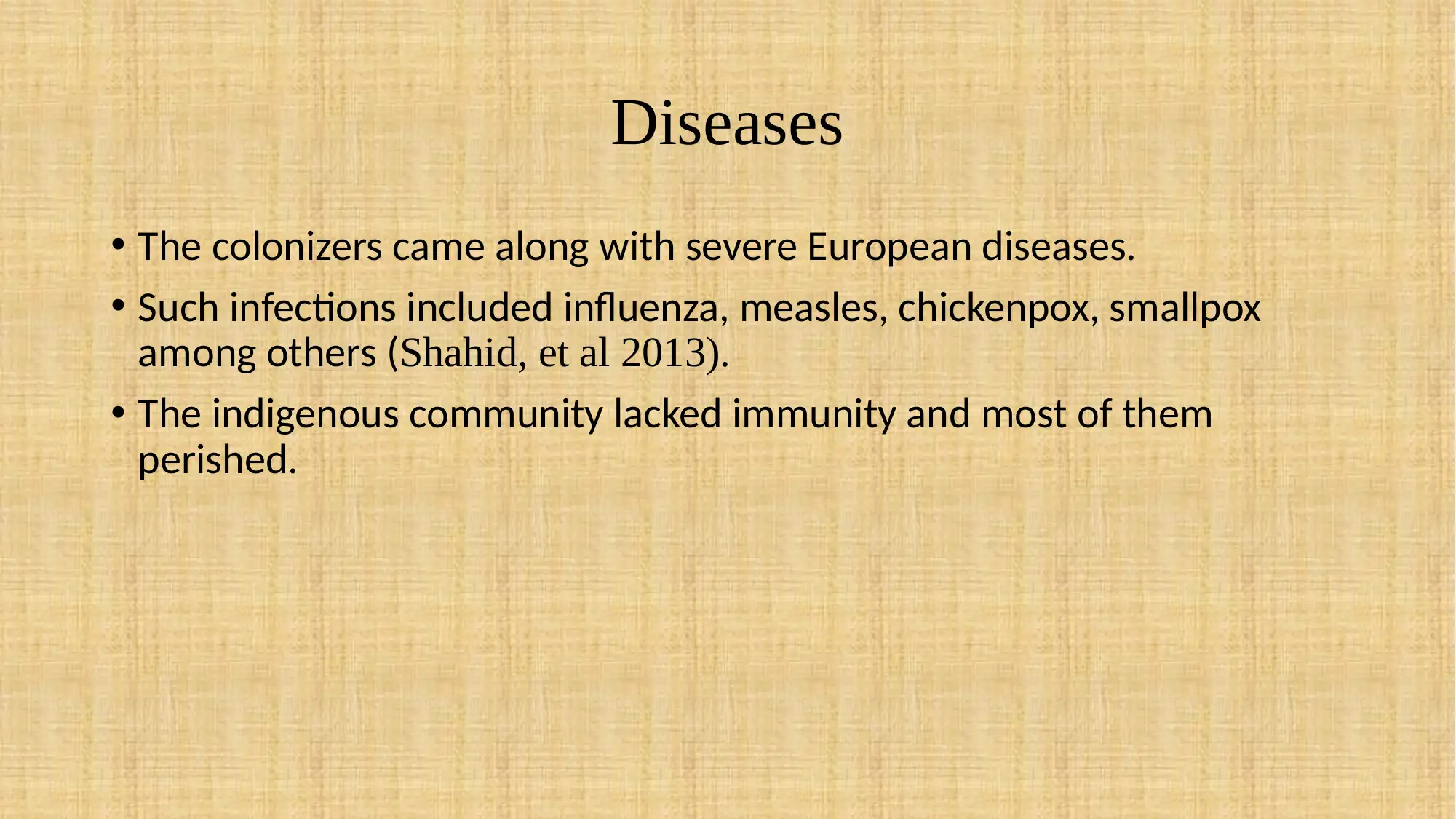




![[object Object]](/_next/static/media/star-bottom.7253800d.svg)